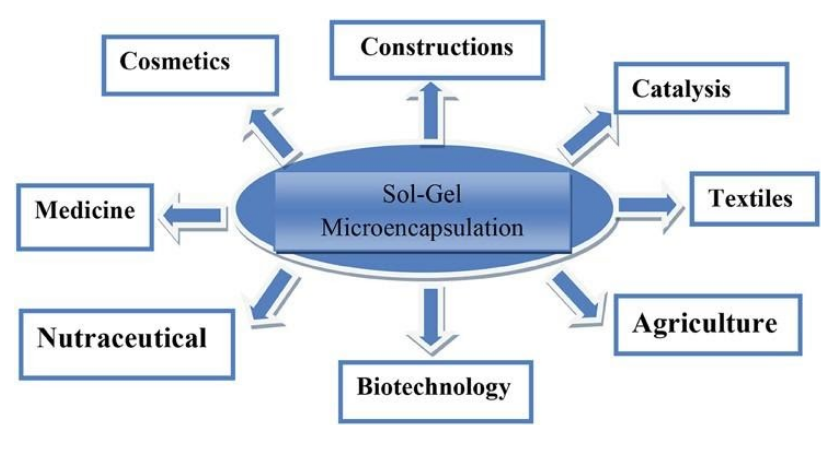Sol-Gel Technology
In materials science, the sol–gel process is a method for producing solid materials from small molecules. The method is used for the fabrication of metal oxides, especially the oxides of silicon (Si) and titanium (Ti). The process involves conversion of monomers into a colloidal solution (sol) that acts as the precursor for an integrated network (or gel) of either discrete particles or network polymers.
* A monomer is a molecule that can react together with other monomer molecules to form a larger polymer chain or three-dimensional network in a process called polymerization.

Ropimex/Adexano - Sol-gel Science
Bacoban’s unique and advanced disinfectant formula, uses a three-dimensional network of nanostructured materials and manufactures them with controlled reactions between different basic materials specific sequences.
Bacoban’s Sol-gel Layer
- By using silicon dioxide SiO2, Bacoban’s anti-microbial layer achieves a long-lasting effect for up to 10 days.
- SiO2 (étude hôpital Ottawa) has been found as an optimum material for obtaining a stable film formation. SiO2 is also one of the chosen materials in the sol-gel process which can undergo controlled reactions in solution.
Bacoban Unique Technology
This is how Bacoban works:
A multifunctional disinfectant on the basis of chemical nano-technology, the Sol-gel technology. Bacoban establishes a three-dimensional network witch, alongside the proven direct germicidal and virucidal effect, establishes two further highly effective mechanisms:
- Anti-microbial effect for up to 10 days (bactericidal, fungicidal)
- Easy-to-clean surface: reduction of the cleaning time by more than 50% (Luxembourg Case Study)
- SiO2 protective coating offers an easy-to-clean solution to non-porous surfaces.
- With time Bacoban reduces cleaning time by up to 50%. (Luxembourg Case Study)
- The sol-gel process is used to produce Bacoban’s semi-permanent nanoscale sponge layer that stores anti-pathogen agents which remain active for up to 10 days protecting surfaces against new contamination of viruses, bacteria and fungi.
- SiO2 protective coating offers an easy-to-clean solution to non-porous surfaces.
